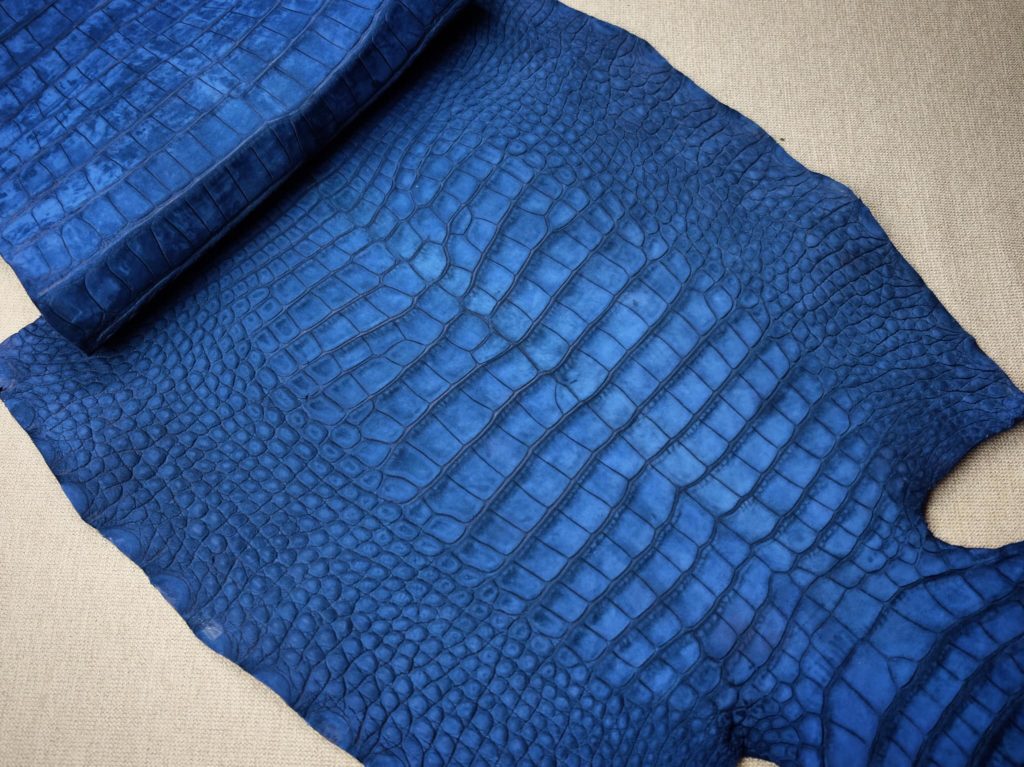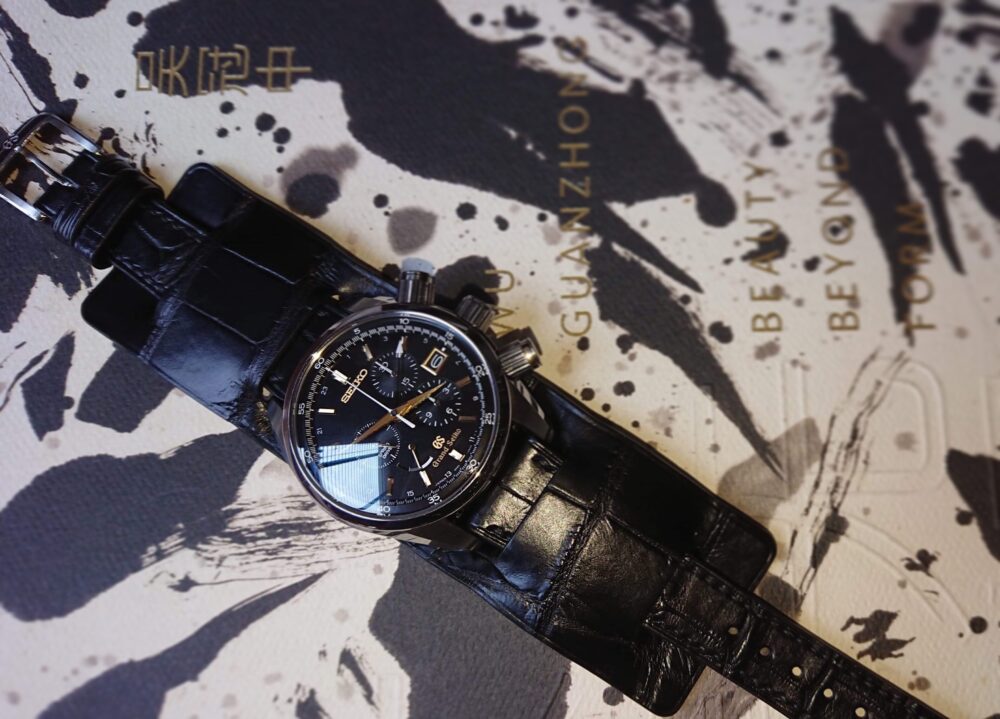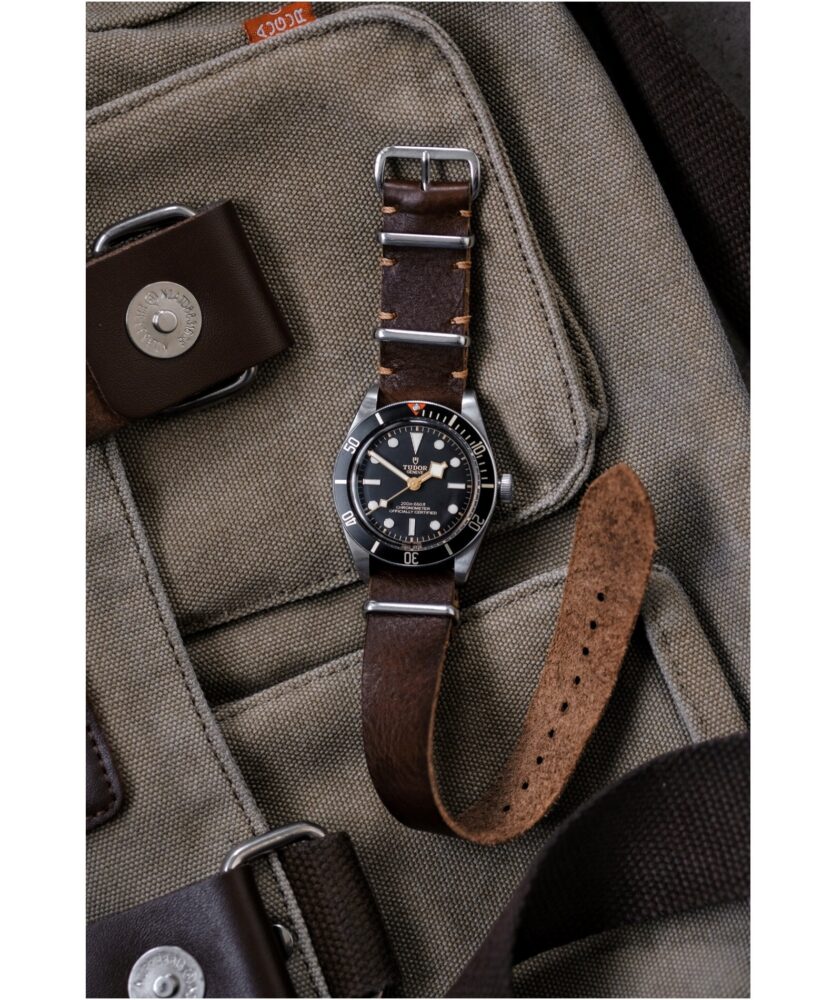Blog
LEATHER WATCH STRAP – THE OLD AND THE NEW
At Hoa Sa, we have developed a strong interest and in-depth research for leather material and its versatility for watches compare to metal, rubber, and nylon.
In this article, Hoa Sa will summarize the general history of leather, concepts, and classifications for readers to easily generate ideas and own a suitable watch strap.
HISTORY OF LEATHER WATCH STRAP
Although there are no specific numbers, the luxurious leather straps on the IWC Mark XVI or the Omega Seamaster Aqua Terra, or the Oris Audi Sport GMT that appeared thousands of years ago prove that the bracelet has a history. as old and interesting as the history of a watch itself.
Several sources point to its origin at the time of South Africa’s War of Freedom, or earlier during the 1885’s Third Burmese War. Soldiers were forced to take off their clothes in the hot weather, while pocket watches were worn initially on a simple leather band.
Until the end of the 19th century, due to military requirements, the transition from a pocket watch to a strap-watch was mandatory. Not only did it allow soldiers to hold and fix the watch easily, but also protected the operating mechanisms of the wristwatch.
During the events of the Boer War and World War I, strap watches became the military standard. The one-piece leather strap was the forerunner of the NATO and G10 straps in the 1970s. And throughout many wars and battles of Gallipoli, Northern France, and Belgium, WWII, they were further developed for military purposes.
WHAT IS LEATHER?
In modern days, leather is generally divided into genuine and imitation. While there is the natural, artificial one often goes by names like “Pleather”, “Vegan”, and “Bicast”.
Genuine leather is generally produced from animal skins: cows, goats, sheep, and horses. Despite environmental sensitivities and animal rights, it is widely accepted that the cowhide or calfskin often being stamped with the same pattern as the skin of crocodiles, and iguanas. For example, Mont Blanc’s products are associated with iguana embossed calfskin, and high-grade Cordovan leather based on the shoe-shining city in Spain.
Imitation leather usually derives from industrial factories. It is treated with natural and synthetic oils, tanning, dyeing, and different surface treatments, textures, and graining. Tanning and finishing processes vary depending on the tanneries.

CLASSIFICATION OF LEATHER WATCH STRAP
Leather straps come in different sizes, shapes, styles, and especially materials at certain price points. Therefore, among others available on the market for selection, some are suitable for specific watches.

Here, Hoa Sa will list out famous and notable variations of leather watch straps for our readers to relate to and find the most suitable ones:
-
STITCHED WATCH STRAP
Genuine leather watch bands are made in this type, before stitching the two sides of the leather that are glued together. This stitched band is applied on many different materials such as crocodile skin, cow leather or iguana skin…etc. The stitched strap can be processed either by machine, handmade, or both methods.
The stitching contributes a lot to the aesthetic look or style of your watch. The gluing and stitching process is the traditional way to create a double-thickness strap (or use lining, with materials other than leather comes different aesthetic or functional attributes).

Handmade by artisans at Hoa Sa
-
BUNDSTRAP
Bund strap (Bund wire) is a type of watch band with a wide back, which can be one-piece or two-piece.
The Bund cord has its origin in the mid-1950s and seems almost certainly dated to the founding of the German Federal Armed Forces (Bundeswehr). Some reports suggest that the German military adopted the Bund rope widely from the 1960s and onwards.
Later, when the aviation industry developed, pilots started using Bund ropes for many different reasons. Some said it was easy to transition from pocket to wrist, others say it insulated between the watch and the wrist (temperature change in the cockpit during high flight), or just to avoid the patterns engraved on the bottom of the watch from being imprinted on the hands. But perhaps the simplest reason was just to accommodate a larger diameter watch.
There also have been reports that the Bund bracelet appeared from the earliest days of wristwatches in the late 19th and early 20th centuries. The large leather pieces were made to protect the watch’s thin chrome plating from discoloration after contact with sweats.

While not as popular as other bracelets, Bund bracelets fit a wide variety of watches from Stowa, Laco, Hamilton, and IWC.
-
NATO
NATO or ‘G10’ from the 1970s are officially specified as nylon, not leather. However, because they were so popular and went beyond the military standards, NATO with multiple materials appeared.

With practical design and a high level of safety, NATOs are very versatile and suitable for many distinctive fashion styles, which has led to many people choosing a NATO watch band for themselves. At this time, the standards of a NATO strap have become higher, which boosts the demand for owning a genuine NATO watch band.
SHOULD YOU WEAR LEATHER STRAPS OR OTHER MATERIALS?
The leather strap has always been defined as an artisanal item, expressing styles from classics, and vintage to modern, elegance.
However, personal preference depends on the context, materials, and environment in which the watch is used.
Therefore, you should consider choosing suitable items for your watch and Hoa Sa would be delighted to support you.
